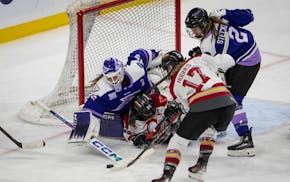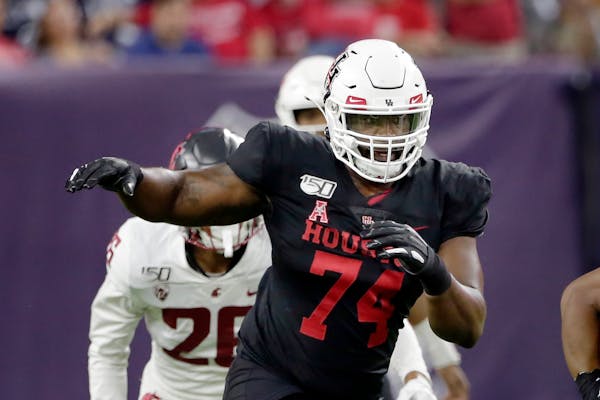Stefon Diggs caught 63 passes for the Vikings last season and averaged 17.9 yards per catch, fourth best in the NFL.
There might not have been a better offseason in which to trade him.
The NFL draft, which runs Thursday through Saturday, has a strong and deep group of receivers. The highly anticipated class has been compared to the star-studded 2014 group of Odell Beckham Jr., Mike Evans, Davante Adams, Allen Robinson and Jarvis Landry.
Vikings General Manager Rick Spielman, who traded Diggs to the Bills on March 16, picked up an extra first-round selection (22nd overall) from Buffalo. But how early the Vikings take a receiver is a major question, given the depth of this year's talent pool, the team's offensive playbook and a high first-round miss rate on wideouts across the league.
Remember, the Vikings took Laquon Treadwell 23rd overall in 2016 after Corey Coleman, Will Fuller and Josh Doctson went off the board.
And Diggs, who blossomed into a standout, was a fifth-rounder the year before.
"It's an incredible receiver draft this year," Spielman said Feb. 25, the last time he publicly spoke to reporters at the NFL scouting combine. He's scheduled to Zoom with Twin Cities reporters Tuesday for the first time since trading Diggs.
Among questions for Spielman are whether this Vikings receiver group, which added Tajae Sharpe for depth after trading Diggs, needs a big-time addition. The Vikings used the fewest receivers in the league last season (18% three-wide formations) while Adam Thielen was injured midseason.
Quarterback Kirk Cousins has said he can only be as good as the talent around him, but he doesn't sound as if he's banging the table for a first-round receiver.
"Quite frankly, I'm someone who is a proponent of a two- or three-tight end offense, of having a fullback in the game especially when you have C.J. Ham," Cousins said this month via teleconference. "There's no rule that says we have to play four or five wide receivers at a time."
'31 flavors'
Whatever skills Vikings evaluators prioritize in the receiver search — speed? separation? elusiveness? — they should be able to find some combination in this draft class. Oklahoma's CeeDee Lamb and Alabama's Jerry Jeudy are projected to become instant No. 1 receivers, according to NFL Network draft analyst Daniel Jeremiah, while middle-round options are diverse and numerous.
"They're outstanding. It's a 31-flavors receiver group this year," Jeremiah said. "You can like a lot of them; it's just different flavors depending on what you're looking for. I have CeeDee Lamb as my top guy because of everything he can do. Jerry Jeudy, next for me, is the best route runner in the draft."
Lamb, Jeudy and his Alabama teammate, Henry Ruggs III, are expected to be gone when the Vikings are on the clock at picks No. 22 and No. 25. In Minnesota's range might be Justin Jefferson (LSU), Brandon Aiyuk (Arizona State), Tee Higgins (Clemson), Denzel Mims (Baylor) and Jalen Reagor (TCU). They vary in style from Jefferson's shifty slot game to Higgins' high-flying downfield grabs.
A receiver — or two — is needed from the Vikings' 12 draft picks just to fill the locker room. Eight receivers are on the current 90-man roster; the team typically takes at least 10-12 into training camp. After the do-it-all Thielen, depth is limited. Sharpe is by far the most experienced ahead of Bisi Johnson and Chad Beebe.
But depth, along with star power, is prominent in this draft class: Jeremiah has eight receivers, including Aiyuk, Higgins and USC's Michael Pittman Jr., ranked among his top-50 draft prospects.
The Vikings have five picks — No. 22, No. 25, No. 58, No. 89 and No. 105 — in the first three rounds. There's reason to pass on a receiver early this year, according to SiriusXM NFL analyst and former Dallas Cowboys executive Gil Brandt, especially if a team also needs help at a position with less depth, like the offensive line.
"You're going to go into the second round and be able to get a good wide receiver," Brandt said. "I don't think you'll get the same type of offensive lineman in the second round, value-wise, as you would a wide receiver."
Buyer beware?
Volatility might be another reason to wait a round or two.
The Vikings' uneven track record, with two first-round receivers in Treadwell and Cordarrelle Patterson (2013) during Spielman's GM tenure, mirrors the league's recent struggles to find consistent receivers in the first round.
In the wake of the historic 2014 draft class, Treadwell — initially cut by the Vikings last summer — is among many first-rounders to stumble.
Recent first-round successes — Amari Cooper (Dallas) and D.J. Moore (Carolina) — are more rare, while picks in the second round and beyond make immediate impacts, including Seattle's D.K. Metcalf and Washington's Terry McLaurin last year.
A lack of maturity can be a particularly tough obstacle for receivers to overcome making the leap from college to the pros, according to SiriusXM analyst and former Bucs General Manager Mark Dominik, because NFL playbooks and defenses demand more mentally and physically.
"The big reason why receivers probably don't ascend, or bust more, is because in college they're going against 18-, 19- and 20-year-old young men," Dominik said. "A guy who is more gifted or stronger at that point will show up and be a better player, whereas you get in the NFL and you're going against a 29-year-old man. That's a huge difference."
The Vikings likely aren't expecting Diggs-level production from a rookie. The offense might require a group effort, including second-year tight end Irv Smith Jr., to replace Diggs' team-high 1,130 receiving yards, while Gary Kubiak's offense will ask rookies to block more than pass-happier systems in Arizona or Philadelphia.
Regardless, the learning curve has been steep.
"There's so much difference playing at the NFL level because of all the different defenses they see and all the adjustments they have to make," Brandt said.
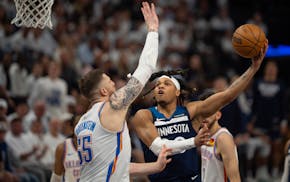
Timberwolves unveil X factor against Oklahoma City
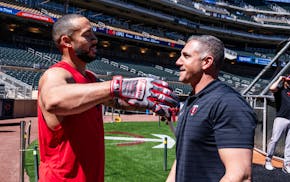
From Fort Myers to Minneapolis, Twins travel guy gets team to the ballpark on time
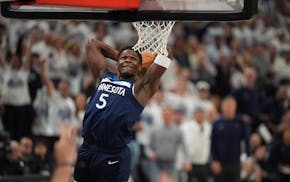
Timberwolves, to borrow a theme from their coach, hit a home run in Game 3 vs. Thunder
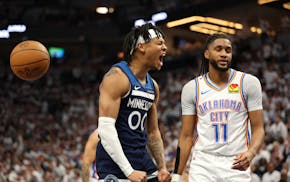
Timberwolves takeaways from Game 3: The game had barely begun and the Thunder were done
